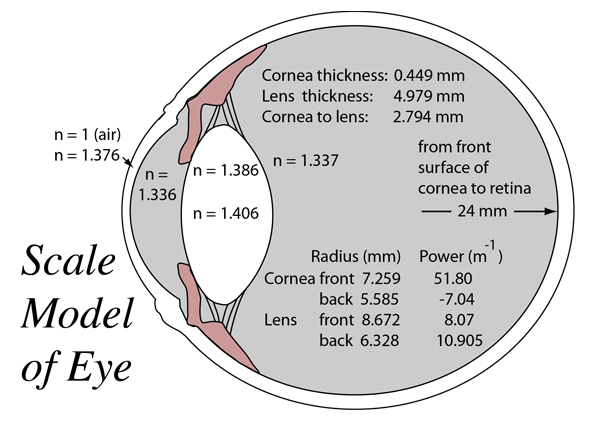
| Design parameters | Accommodation model |
Vision concepts
Image formation concepts
Reference
Hecht, 2nd Ed.
Sec. 5.7
| HyperPhysics***** Light and Vision | R Nave |

|
Index Vision concepts Image formation concepts Reference Hecht, 2nd Ed. Sec. 5.7 | ||
|
Go Back |
|
Index Vision concepts Reference Hecht, 2nd Ed. Sec. 5.7 | ||
|
Go Back |
The term cataract is used to describe the condition of clouding or darkening of this lens. |
Index Vision concepts Reference Hecht, 2nd Ed. Sec. 5.7 | ||
|
Go Back |
|
Index Vision concepts Reference Hecht, 2nd Ed. Sec. 5.7 | ||
|
Go Back |
Vitreous Humor
The index of refraction of both of the interior fluids of the eye are very close to that of water, n= 4/3 = 1.333 . |
Index Vision concepts Reference Hecht, 2nd Ed. Sec. 5.7 | ||
|
Go Back |
Cataracts
When the inner lens of the eye becomes darkened or opaque, the condition is called a cataract. The lens may be surgically replaced with a plastic lens. This can have dramatic results in restoring vision to the eye. The implanted lens is of fixed focal length, so it is not capable of accommodation like the natural lens. This is usually not a major concern, because persons who develop cataracts after age 60 do not have much accommodation remaining anyway because the inner lens has become less pliable with age. |
Index Vision concepts Reference Hecht, 2nd Ed. Sec. 5.7 | ||
|
Go Back |